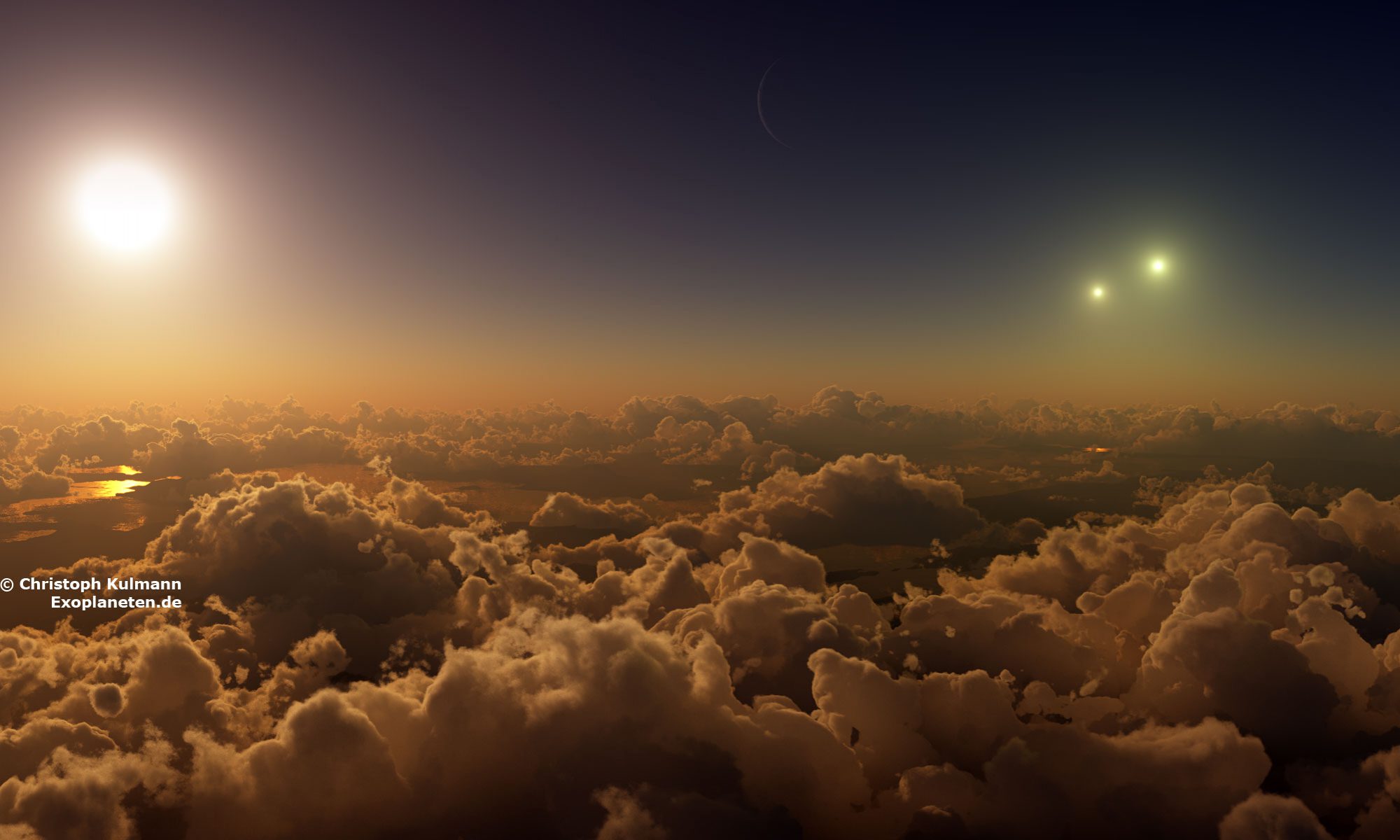ExoShop
Some exoplanet related art is now available at my DeviantArt page. Are you looking for some nice postcards or posters? Feel free to take a look. Your order and payment will be processed by DeviantArt.
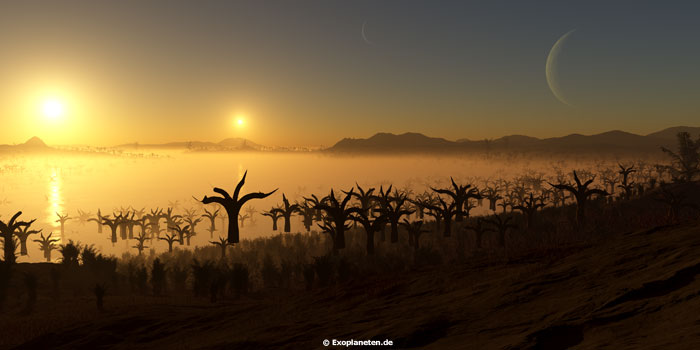
Shores of Distant Worlds - Alpha Centauri B
The habitable planet of Alpha Centauri B has been the topic of intensive research since its discovery was announced in 2035. For decades, arrays of telescopes have been aimed at this world and scientists tried to extract every bit of information from blurry images. Poets wrote entire volumes of phantastic stories about the lifeforms they thought existed there... When the first expedition touched down on September 5th 2396, scientists noted the huge areas of swamp covering most of the northern continent. One of the most remarkable creatures they recorded was the Selachophyton, more like an animal than a plant, though it is immobile for most of its life. The Selachophyton waits patiently in the shallow waters and damp shores for prey. Any careless creature venturing too close may find itself within the predator's fangs. Growing 4-5 meters tall, the Selachophyton is a creature to be respected. Later - and totally illegal - private sightseeing tours noted cases of people missing after visiting a Selachophyton stand, so authorities advise you to watch this lifeform only from a save distance.
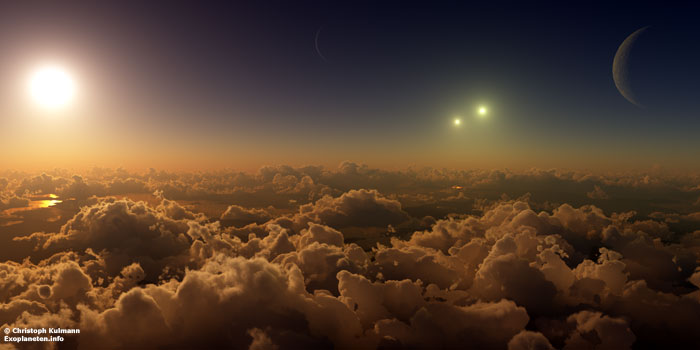
Triple Sunset
Planets are not confined to single stars. Here a still nameless "Super-Earth" circles a small Red Dwarf star. A second pair of stars is visible at the horizon. The Red Dwarf and its planet orbit around the more massive pair of sunlike stars. Could there be life on such a planet?
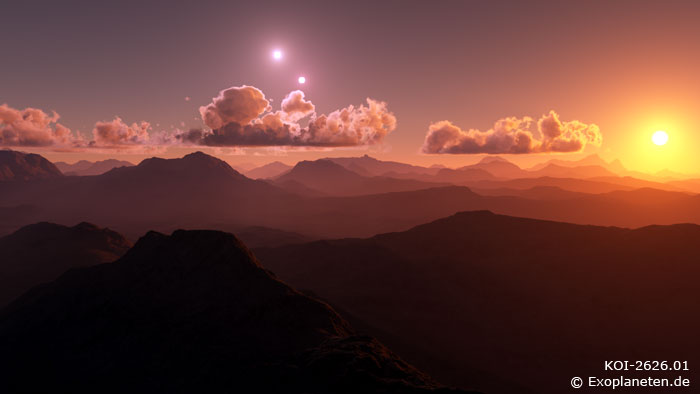
World under Three Suns
KOI-2626.01 ("Kepler object of interest") is an earth-sized planet in a system of three or even four small suns. It is thought to be warmer than Earth and is likely to be some kind of desert world. arxiv.org/abs/1407.1057

Exoplanet Gliese 581c
"Super-Earths" are a class of planets more massive than Earth, but lighter than Uranus and Neptune. Super-Earths are a very diverse class of objects. At least some of them may have a rocky surface. The planet in this image orbits a small star and has a dense atmosphere rich in sulphuric gases. Such a Scenario would fit well to Gliese 581c, an Exoplanet only 20 lightyears distant from Earth.
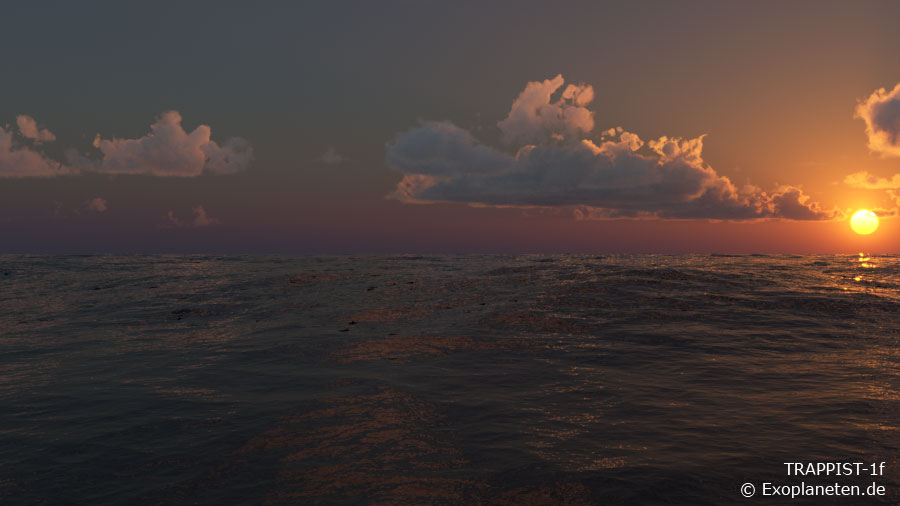
TRAPPIST-1f
TRAPPIST-1 is a tiny star some 39 lightyears away. Recently, a very compact system of seven earth-sized planets has been discovered around this star. Three of them are likely to be within the habitable zone. TRAPPIST-1f is about the size of the Earth, but only 0.68 times it's density. This makes it a reasonable candidate for a water world. The planet is so close to it's star that tidal forced will have halted its rotation long ago. Thus the planet would have a permanent dayside and a permanent nightside. At least on the dayside, the ocean may be liquid. TRAPPIST-1f is cooler than Earth, with an estimated equilibrium temperature of -54°C (Earth: -15°C).
